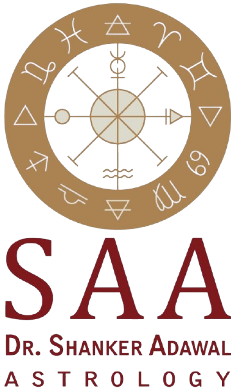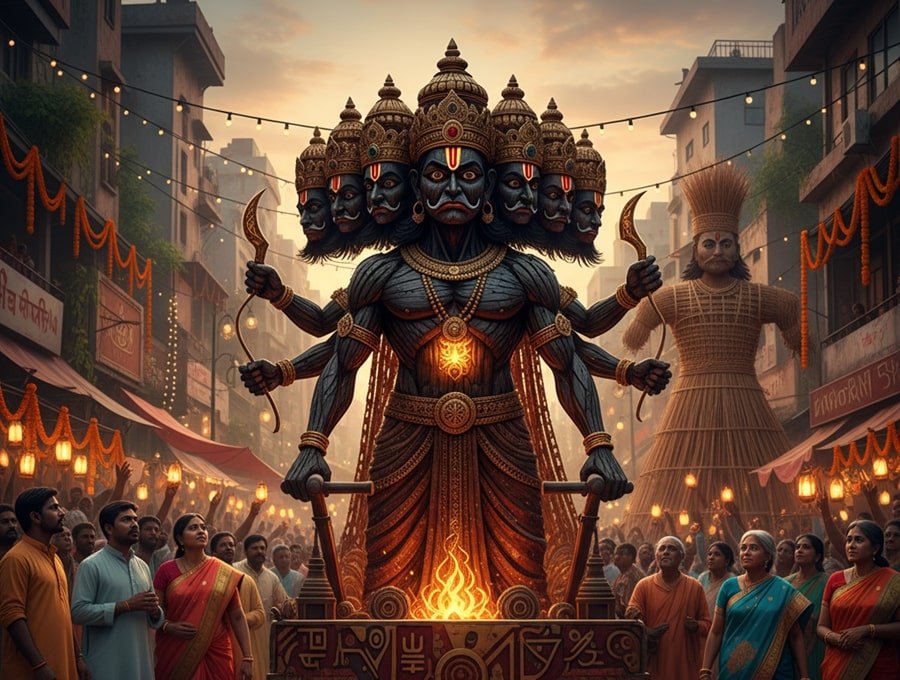From public grounds to private terraces, the festival of Dussehra is changing shape. The colorful effigies of Ravana that once towered over crowded parks are now appearing on pavements and even in people’s homes. But what happens when a symbol of destruction enters our living space?
- The Festival Takes a Turn
In recent years, a subtle shift has appeared in how Dussehra is celebrated.
Small, ready-to-assemble Ravana effigies now line the roadsides — bright, attractive, and easy to carry home. Vendors across cities have found a booming market for them, while families treat them as a festive DIY activity for children.
But this modern expression of devotion raises a profound question —
Is burning Ravana at home a form of celebration or an invitation to imbalance?
- Ravana — Beyond the Myth
To understand this, we must revisit who Ravana truly was.
In the Ramayana, he is the antagonist, yet spiritually, he represents something much more layered.
He was a great devotee of Lord Shiva, a scholar of the Vedas, a musician, and a master of the nine planets.
Ravana wasn’t destroyed for his brilliance — he fell because of ego and attachment.
The act of burning his effigy symbolizes burning arrogance, greed, and illusion — the dark qualities that overpower human wisdom.
In every Ravana we burn outside, there lies one within — waiting for light.
- From Collective Celebration to Private Ritual
Traditionally, Ravana Dahan was a public act — grand, collective, and symbolic of social purification. The open space allowed the energy of fire to rise freely into the sky.
But when the ritual moves into a private home, the vibration changes.
The home is a living organism of energy — each corner representing an element.
When we introduce a ritual of destruction (Agni) into that system without purification or direction, we alter its balance.
Intent decides everything — when done consciously, it cleanses; when done casually, it confuses.
- Fire Has Direction — The Vastu Dimension
In Vedic and Vastu sciences, fire is a sacred yet volatile element.
Its placement defines its outcome.
Key Directions:
South-East (Agnikon): The rightful place for fire, symbolizing transformation and creation.
North-East (Ishan Kone): The divine zone of peace, intuition, and purity — incompatible with fire.
South-West: Associated with karmic storage — fire here can intensify heavy vibrations.
Burning a Ravana effigy in the wrong direction, especially the North-East, creates a clash of elements.
It’s not superstition — it’s energy science.
The same fire that purifies in one zone can disturb in another.
- A Personal Reflection
Years ago, a family assembled a small Ravana with their children — joyful, artistic, and innocent.
They placed it on their terrace and lit it on Dashami morning, not realizing it was the North-East corner.
The following months brought unexplained heaviness — obstacles, restlessness, and sudden setbacks.
It took time and awareness to recognize that energy, once disturbed, seeks balance.
The act was not wrong — only misdirected.
- Realigning the Ritual
If the intent is symbolic, the ritual must follow awareness.
Here are safer, sacred alternatives:
Burn with Purpose:
Write your negative traits or fears on paper and burn them in a diya or havan kund placed in the South-East corner.
Return to Earth:
Make a small clay Ravana and dissolve it in soil or water instead of burning.
Invoke Fire, Don’t Provoke It:
Light a ghee lamp, chant Om Agnaye Namah, and pray for purification — not destruction.
Fire obeys the one who understands it; it tests the one who ignores it.
- The Deeper Message of Dussehra
Dussehra’s victory narrative — whether of Ram over Ravana or Durga over Mahishasura — carries a timeless truth:
Conquest is meaningless without consciousness.
The effigy we burn is not Ravana’s body but our own inner arrogance.
Every Dashami invites us to look within — to replace reaction with reflection, pride with humility, and darkness with awareness.
- The Modern Relevance
The evolving “Ravana at Home” trend reflects how modern life seeks personal meaning in public rituals.
Festivals are adapting to smaller spaces, faster lives, and individual expression.
But the essence must remain rooted in awareness — or else we reduce sacred acts to seasonal trends.
- The Closing Thought
Fire is divine when it illuminates, destructive when misunderstood.
Bringing Ravana home isn’t wrong — but it demands mindfulness.
“Burn the Ravana of ego, not the effigy of ritual.”
When awareness becomes the flame, even smoke carries light.
Mobile: 9818733000
www.ShankerStudy.com – ‘Bridging Ancient Wisdom with Modern Astrology’
Tag2Adawal.blogspot.com – ‘Blending Astro Stories with Soulful Simplicity’
www.ShankerAdawal.com – ‘Profile of Success: Vedic Wisdom and Business Strategy’
www.AskShanker.Com – ‘Discover the truth – ask one burning question based on your Horoscope!’
www.shrikrishnapravahashram.org – Serving Souls & Healing with Compassion: Empowering Girls, Upholding Tradition, and Offering Food to Every Guest – ‘Atithi Devo Bhava’!

